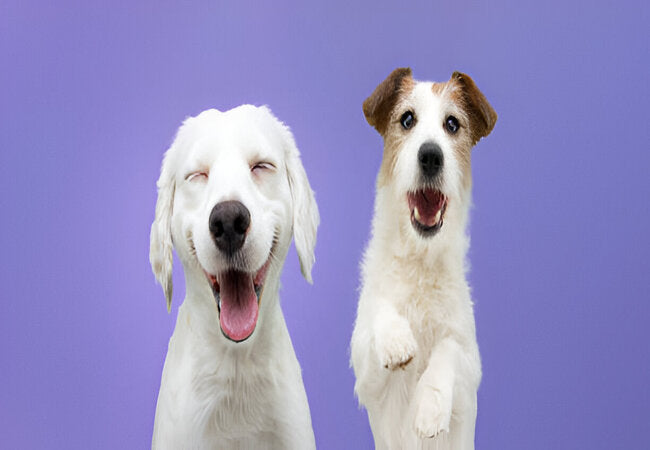Do Dogs Smile in 2025 – Vet‑Approved Science-Based Guide to Canine Grins & Emotions 🐶😊

In this article
Do Dogs Smile in 2025 – Vet‑Approved Science-Based Guide to Canine Grins & Emotions 🐶😊
By Dr. Duncan Houston BVSc
That joyful, open-mouthed “grin” from your dog can warm your heart—but does it mean what a human smile means? In this extended 2025 guide, I’ll unpack the science behind canine smiles, differentiate them from stress signals, explore how dogs mirror our expressions, and teach you how to read these gestures alongside calming body language. Let’s dive into the world of dog facial expressions with clarity and compassion. 🧠🐾
1. What Canine "Smiles" Look Like
Canine smiles are typically relaxed, slightly open mouths with visible tongues and relaxed lips—often seen when content and at ease. Behaviorists recognize this as the most smile-like expression in dogs, indicating tranquility.
2. The Science Behind the Grin
- Facial relaxation: Relaxed jaw, open lips, and visible tongue mirror positive emotion.
- Mimicry & emotional contagion: Dogs often mirror human smiles to bond or appease—likely due to evolved sensitivity to human emotions.
- Oxytocin feedback: Mutual gazing releases oxytocin in both dog and owner, deepening social connection.
3. Submissive Grins vs True Smiles
- Submissive grin: Dogs lift lips to expose teeth in a relaxed, appeasing way—this is a calming gesture, not aggression.
- True relaxed smile: No lip tension, open mouth, soft eyes, relaxed posture—this indicates contentment, not fear.
4. Does It Mean Your Dog Feels Happy?
Yes, in many cases. While not identical to human smiles, these expressions correlate with emotional states like calmness and trust. Dogs use them to communicate and strengthen social bonds—especially with smiling owners.
5. Why Context Matters
- Reading expressions in isolation leads to errors—context and body signals matter.
- Studies show people often misinterpret dog signals based on surroundings—learned awareness is key.
6. Combining Smiles with Other Signals
- Soft eye contact = relaxation; tense eyes or avoidance = stress.
- Tail posture: loose wag vs stiff indicates joy or tension.
- Ear, head tilt, body posture: relaxed body with smile = happy; stiff body + grin = anxiety/submission.
7. Can You Teach Your Dog to Smile?
Yes—many owners celebrate viral cases like “Bella & Bean” showing learned smiles on cue.
**Method:** reward relaxed open-mouth behavior with treats and gentle praise, then add a command like “smile”. Always confirm it's a joyful expression, not stress or fear.
8. When a Grin May Mask Stress
- Lips tense, yawning, slow blinking, averted gaze, or lip licking = potential anxiety—not contentment.
- If unsure, look at the full body context—stressors like doctors, strangers, loud sounds may cause a forced “smile.”
9. Tips to Support Genuine Happy Expressions
- 👏 Encourage relaxed expressions with calm praise, treats, and low-key praise.
- 🧠 Provide enrichment and social interaction to promote well-being.
- 🧘♂️ Reduce stress—maintain routine, avoid overstimulation, offer calming safe spaces.
- 📸 Capture authentic moments—smiles during play or rest are likely genuine; cue-led smiles are learned.
10. 📱 Ask A Vet App 2025 Support
Use the Ask A Vet app to:
- 📹 Upload videos of your dog’s expressions for expert analysis.
- 🧩 Get guidance on teaching cues safely and enriching emotional health.
- 💬 Consult about subtle stress signals or positive emotional support.
Ensuring your dog’s expressions reflect joy, not stress, keeps them healthy and bonded. 🐾📲
❤️ Final Thoughts
Dogs don’t smile exactly like humans, but relaxed open-mouth expressions and submissive grins carry important emotional meaning. They mirror our joy, communicate ease, and strengthen bonds. Context is key—learn the full suite of body signals—and you’ll read your dog’s emotional world with greater precision and love. 😊🐶
Need personalized insights? Visit AskAVet.com or download the Ask A Vet app to chat about your dog’s emotional cues and smile-like expressions.






